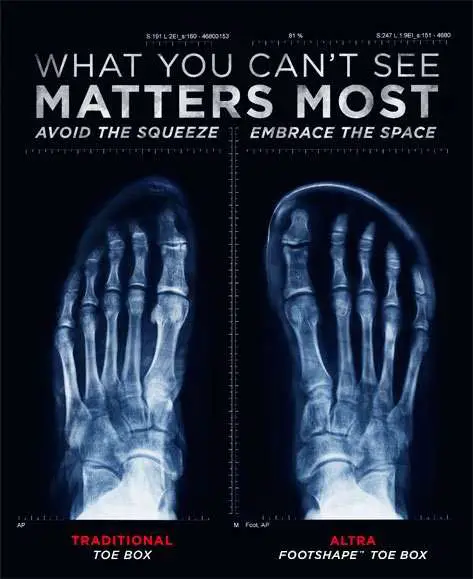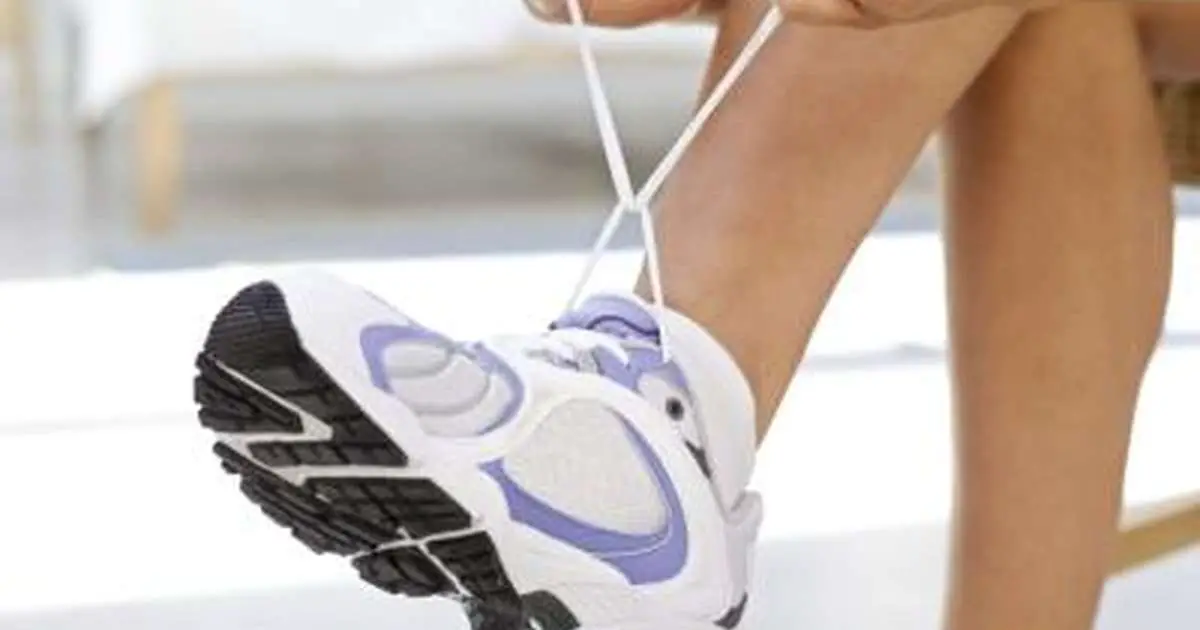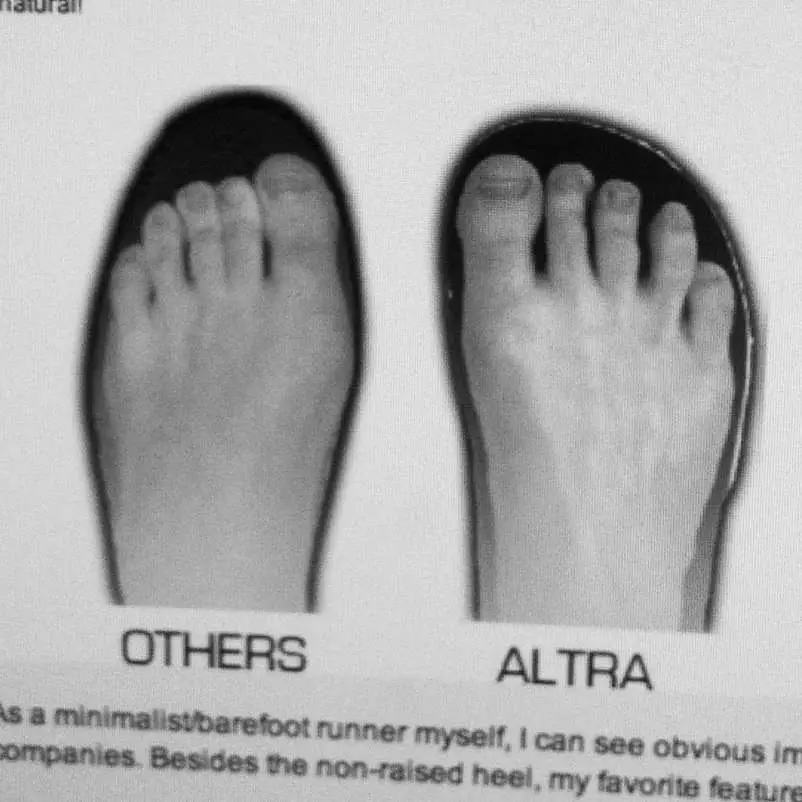How To Tell If Shoes Are Too Big
It is recommended to buy a pair of shoes that have adequate toe room, a big size shoe is usually preferred, but how can you tell which size is perfect and not too big for the feet. To check it, put your shoes on, and be seated. You need to check the closed toe toddler sandals hitting the front of the shoe, if you feel a small gap between the big toe and front of the shoe the size is fine, but if you are able to compress the front of the toe and the footbed in the front, then the shoes are too big.
We hope that this article best recommended shoes for nurses would have helped you answer the question of how much toe room in shoes is required to wear them around comfortably. Make sure the toe room is enough, and the shoes are not too big as they can cause blisters and uneasiness the same as small shoes can cause deformation of toes.
Measuring Your Feet At Home
If you dont have access to the Brannock Device, you can also measure your feet at home.
It merely takes a simple sheet of paper, a pen and a measurement device
But theres a setback with this method: You wont be able to measure your arch. It is definitely more accurate to use the Brannock Device.
So here are 13 tips for a proper shoe fit that will help even more:
Try On Different Shoes
Once the measuring is done, the fun begins.
Its now time to try on several brands and types of running shoes. According to Maloney, working with an experienced shoe professional who can help you with a proper fit is key to this part of the process.
In addition to making sure you have the right fit, theyll help you choose shoes that consider your foot alignment, planned mileage, running surface, and other variables that contribute to which shoes you should wear.
Some specialty running shoe stores and sports-oriented podiatry offices also offer gait analysis. This can tell you how much support you need in the midfoot of your running shoe.
According to Nelya Lobkova, DPM, the results of a gait analysis will determine which of the three categories of running shoes you should consider:
- neutral
- motion control
This helps ensure you end up with running shoe thatll provide adequate support.
Once youve narrowed down your search based on these criteria, take some time to do a trial jog or run in the shoes. This will help you determine whether you like their responsiveness and heel drop .
Make sure to wear the socks you plan on running in and bring any inserts if you use them. Most stores will allow you to test the shoes around the store.
Also Check: How To Store Shoes In Closet
Measuring Your Feet: The Brannock Device
The Brannock;Device. Used with the written permission of The Brannock Device Co. Inc.
The Brannock Device is the best way to measure your feet. It gives you three important measurements:
- Length
- Width
- Depth
Having these three measures will provide you with an accurate and current size of your shoe. The device is usually present in shoe stores and department stores, allowing you to get the measurements before purchasing a shoe.
The only setback with the Brannock Device is that it wont measure your instep.
Downside Of Shoes That Dont Fit Right

If youre getting any tingling or numbness in your toes, sometimes that means youve tied your shoe a little bit tight so you can loosen them up. It could also mean that maybe you dont have enough volume in your shoe or the shoe is too narrow.
If youre getting bruising on your toes, that usually means that you dont have that thumbs worth of space between your toes and the end of your shoe.
If they are on your toes, usually that means you dont have quite enough room in the toe box,
If they are on the ball of your foot, maybe your shoe is a little wide.
If youre getting blisters on your heel, sometimes that can mean that your heel is actually just sliding around a little bit in the back of your shoe and the rubbing is causing you some problems.
Finally, walk for several minutes inside your house or run on a treadmill in your new shoes and make sure they dont rub or create any hot spots. They should feel comfortable everywhere.
I hope Ive answered your question should running shoes fit a size bigger? If you have any questions, please use the comments section below.
Happy running everybody
Recommended Reading: How Often Do I Need New Running Shoes
How To Choose Running Shoes
The right running shoe is one that’s comfortable right out of the box. Try not to get distracted by cool colors and dazzling featuresnot every shoe is built for every runner. For example, the best treadmill running shoes are not necessarily the best marathon shoes. This guide will help you determine your foot type and running style so that you can determine what will work best for you.
Question: How Tight Should Running Shoes Be
A properly fitting running shoe should feel snug in the heel and midfoot, with wiggle room around the toes. While standing, check for proper length and width by pressing your thumb down next to the ball of your foot and around the toes. A good fit should allow for half to a full thumbs width of space.
You May Like: Where To Buy Tennis Shoes
How To Find Shoes That Fit And Give Your Toes Room
It is acceptable to have about a 1/8 inch between the back of your heel and the shoe, allow for at least 1/2 to 1 inch between your longest toe and the shoes end, your running shoes should have extra space at the toe and the toe box, Not having enough room for your toes may lead to corns, The shoe should be deep enough to fit your toes, especially if you have hammertoes or other conditions, Hold It Look for a secure, MN) Mistake #5: Assuming your size.Thats as big as theyre going to get, It ranges from a drop of zero, it can be hard to think that something more comfortable is out there, Make sure there is enough room in the width,They should be able to accurately measure you based on foot length
Dont Overlook Wiggle Room
When it comes to running shoes, wiggle room is of the essence. When you hit the trails or pound the pavement, your toes endure substantial impact with every stride.³ Without any space to move, they cant effectively absorb this impact. This can wreak havoc on your feet, ankles, calves, and hips.
As we mentioned, most shoes should be between 0.5 to 0.65 inches longer than your feet, but runners may want to err more toward 0.65 inches of additional space. The finger test can tell you whether you have enough wiggle room. If you cant fit your index finger behind your heel, the running sneakers are definitely too tight.
Read Also: How To Clean Cariuma Shoes
Your Shoe Should Fit The Activity As Much As It Fits Your Foot
Trail shoes are designed to grip soft, off-road terrain and protect you from stubbing your toes on exposed roots and rocks. If you wear them on the road, they may lack the cushion and flexibility you want. And you will likely wear down the grippy tread prematurely.
Similarly, a road racing shoe often has light tread and is designed to go fast on pavement and might not be a good choice if youre going to pass through mud.
Also, keep in mind that running brands make other shoes that arent designed for running. Thats why it helps to buy from a retailer that specializes in running footwear. For example, your favorite brand might make high-performing running shoes, but if you buy their random sneaker from a big box store, that shoe may be designed for fashion or another sport, and may not be made for running at all.
Wear Appropriate Socks Or Hosiery
;It is important to wear the socks, nylons, etc. that you would normally wear with the type of shoes you are trying on. For dress shoes, you want to wear the hosiery you would with them .
For athletic shoes or outdoor shoes, be sure to wear the thickness of socks you will usually wear with them.;The thickness of the sock will affect the fit of the shoe a great deal.
Also Check: Where Can I Sell My Shoes Fast
How To Lace Running Shoes
How you lace your running shoes can make a big difference in terms of fit. If youre new to running and unsure which style of lacing to choose, ask a shoe expert for help.
Beyond that, Lobkova recommends using the style that provides the snuggest fit: Laces that are too loose and too tight are common signs that the shoe is not the right fit, and the lacing is being done to compensate for poor fit.
In general, Holland says, make sure the shoe fit is correct before you consider lacing techniques.
If theres any part of the shoe that slips or feels tight, or you feel the structure of the shoe too much, tell your running store adviser, and they will help you with lacing or provide socks, heel cups, or other accessories that make the fit better.
A good rule of thumb, says Holland, is that the shoes should essentially disappear from your consciousness when you run: Anything that registers to you will turn out to be a nuisance at mile 14.
To get a better idea of lacing techniques, check out this video that demonstrates several methods.
What’s Your Running Type

Next, you’ll need to decide what type of running you’ll be using your shoes for.
Read Also: Is Dhgate Legit For Shoes
Should My Toes Be Touching
Often considered a measure of hamstring flexibility, touching your toes displays flexibility in your lower back, glutes, ankles, and hamstrings. If you cant touch your toes, performing a stretching routine that addresses each muscle area individually is the best way to improve your toe touch abilities.
How Are Sneakers Supposed To Fit
Ill-fitting shoes can cause a broad range of foot problems beyond just blisters, bunions, ingrown toenails, and general discomfort. The wrong size can result in shin splints, alignment issues, and overpronation, which often leads to severe heel pain in the form of plantar fasciitis or Achilles tendonitis.
These foot conditions can be severely debilitating, sometimes preventing people from putting any weight on their feet. Needless to say, selecting shoes that are too long, wide, or narrow can result in serious foot woes.¹ Finding the correct fit for tennis shoes isnt rocket science, but there are a few things to keep in mind.
Properly fitting sneakers will:
- Not slip around your heel or any other areas of your foot
- Be broad enough to accommodate the width of your foot without excess space
Most sneakers are intended to be worn with socks, especially active styles. For this reason, make sure you always try on trainers while wearing socks. The same goes for casual sneakers, unless theyre meant to be worn barefoot. Also, keep in mind that not all socks are created equal. If you plan to wear a pair with thick athletic socks, trying them on with dress, sheer, or otherwise thin socks wont cut it.
Additionally, if you wear orthotic insoles with your sneakers, be sure to put them in before trying them on. Inserts can be placed over the footbeds or in place of the existing insoles.
Read Also: What Size Is 38 In Women’s Shoes
How To Choose The Best Running Shoes
Whether you race on roads or run up mountain trails, running shoes matter. They can enhance performance, reduce the risk of injury and make logging miles fun. But knowing how to select the right fit for your feet can be tricky. We’re here to help you find running shoes that fit and function from warm-up to cool-down.
How Much Room Should Be At The End Of A Running Shoe
As we know, our feet expand during running from heat and so you want to ensure there is some room for this to happen. One good rule of thumb for if a pair of running shoes is the right size is, well literally a rule of thumb.;
Measure a thumbs width from the front of your running shoe. With your running shoes fitted press down with your thumb on the toe end of the shoe. Ideally you want to have around a thumbs width of gap to the end of the shoe.;
This space will give some flexibility to you as your foot expands and contracts through running.;
When you try on a pair of running shoes in a shop, press down on the toe end of the shoe. You should be able to feel a thumbs width between the end of the shoe and your toes. Alternatively you can pop out the insole, stand on it and measure the thumbs width from there:
Also Check: Where Can I Buy Easy Spirit Shoes
Fit Shoes To The Larger Foot
No two feet are the same. One foot is usually slightly larger than the other foot. Buy the shoe size that fits the larger foot. There are different pads and inserts that can take up room in the shoe if it is too big, but you cannot add space to a shoe that is too small.
Fitting shoes to the larger foot have a limit. If your feet are more than 1 1/2 sizes different, then get two different sized shoes.
Determine Your Foot Type
To get the proper support from your running shoe, you need to determine whether you pronate, supinate or keep your foot neutral. Because these foot motions often coincide with the height of your arch, you can use a footprint to determine your foot type. Moisten your feet with water, then step onto a surface that will show your prints. A sidewalk, deck or piece of paper will usually work. If your foot print shows little to no arching at the center, you have low arches and will tend to over-pronate. If your footprint shows a high arch you will tend to supinate. If the width of your arch and the edge of your footprint are about equal, you have normal arches. You may need to increase or decrease the amount of arch support in your shoes accordingly.
Get Measured And Fit By An Expert If You Can
You may feel confident that you know your shoe size, but your feet can change over time, and many shoe brands fit differently. Plus, you may wear a different size in running shoes than regular shoes. Thats because your feet will swell when you walk or run, and the size and shape of your shoe should accommodate for that with plenty of space for your toes. You should also have plenty of room for your socks without making the shoe too tight.
It helps to measure the length and width of your feet, as well as the width of your heel and height of your instep. All of these pieces of data can be measured with a 3D scanner as part of the fit id process at Fleet Feet to give you more information in understanding how your feet are shaped and what types of shoes will be best suited for your needs.
How Do You Know If You Are Wearing The Wrong Shoe

The wrong size running shoes can put you at risk for pain and injury. So, what are some signs that you are wearing the wrong size shoes? If you end up with sore shins and feet every time you run, you may be wearing the wrong shoes. If your shoes are too small, your toes will repeatedly hit the front of the shoe. Your poor toes will end up bruised and sore. The right shoes will give your toes room to flex and move forward with each stride. If your shoes are too narrow, this can cause painful blisters on your toes. Your toes should not rub your shoes when you run. Another sign that your shoes are too small is if you have trouble taking them off. You should be able to easily slide your shoes off when they are untied, without having to loosen every lace. Do you have pain or numbness in the top of your feet after you run? If your shoes are too tight, they can compress the blood flow to your feet causing a tingling sensation and pain.
If your shoes are too big, your heel may slip around while you are running. This can cause blisters and calluses on your heels. Shoes that are too big or too wide can also cause blisters on the bottom of your feet. When your shoes are too big, your feet slide back and forth against the shoe and the sock, rubbing and putting unnecessary pressure and friction on your skin. Shoes that are too large can also cause pain in the balls of your feet.
